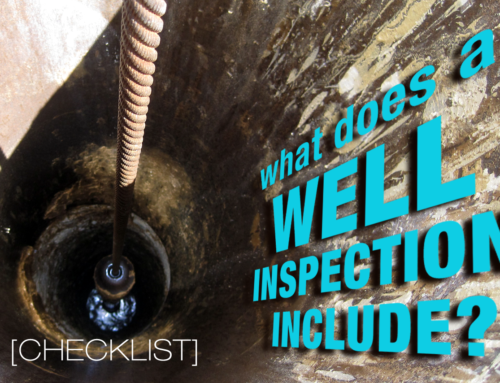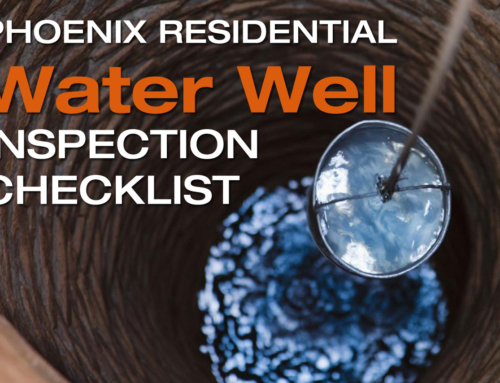Feeling like your well is all tapped out? It’s possible that your pressure switch is causing the problem.
With over 23 million households depending on wells as their water source, ensuring the availability of clean and safe drinking water has become a critical concern.
Well-owners understand the value of being hands-on when identifying and fixing problems whenever they can.
Below, we’ll break down how a pressure switch works, share straightforward tips for troubleshooting, and highlight nine common problems that can occur with well pump pressure switches.
How a Well Pump Pressure Switch Works
In order to troubleshoot issues with your pressure switch, it’s helpful to understand how a well-pump pressure switch works.
A well pump pressure switch is a crucial component of any water well system.
It is responsible for regulating the water pressure in the system and ensuring that the pump operates efficiently.
The switch works by sensing changes in pressure and activating or deactivating the pump accordingly.
When the switch detects a drop in pressure, typically caused by turning on a faucet or shower, it signals the pump to start running.
As the pump operates, it increases water pressure until it reaches a predetermined level set by the switch.
Once this level is reached, the switch senses it and turns off the pump automatically.
This cycle continues every time there is a demand for water in your home.
What to Check Before Diagnosing a Pressure Switch Problem
What to do when your well pump stops working? Here are a couple of things to check:
- Double-check that power is running to your well and that there isn’t a short.
- Check the water pump breaker in your electrical box to make sure the breaker hasn’t tripped. If it has tripped, you will want to investigate why that might have happened. Continuous tripping could be caused by a broken wire leading to or inside the water pump.
- Take a moment to inspect the pressure gauge on your well tank and verify that it registers a minimum of 40 PSI (or the designated cut-off PSI specified for your pressure switch model).
If the reading falls below this threshold, it’s important to investigate the condition of your filter.
- Ensure it is free from clogs and determine if a filter replacement is necessary.
- Check the pressure gauge to make sure it isn’t stuck or damaged.
Once you’ve ruled out the water pump and other components, you can focus on the pressure switch.
Common Problems with Your Well Pump Pressure Switch
How do I know if my well pressure switch is bad? Here are nine of the most common issues you will observe with your pressure switch:
-
Switch Won’t Turn On
If your switch fails to activate, it may indicate that your tank pressure exceeds the cut-in pressure of the switch.
In such cases, attempt to reduce the pressure by running water in other areas of the building until it falls below the cut-in level.
Additionally, consider tapping on the pressure gauge, switch, and tank with a gentle touch as a troubleshooting measure
-
Switch Won’t Turn Off
If your well pump pressure switch doesn’t turn off, there are a few troubleshooting steps you can take before calling in a professional.
Start by checking for visible signs of damage or debris around the switch and clean it if necessary.
Next, try manually turning off the power to see if that overrides any potential issues with the switch mechanism.
If that doesn’t work, you may need to test the contacts inside the switch using a multimeter to determine if they function correctly.
-
Switch Won’t Turn On or Off
One common problem with a well pump pressure switch is that it may refuse to turn on or off.
If the switch won’t activate, it suggests power supply or wiring problems.
Failure to deactivate may result from a malfunctioning relay or pressure sensor, prompt resolution is crucial to prevent motor wear and damage.
Troubleshoot by checking the power, inspecting connections and wiring for damage, and consider replacing the pressure switch or problematic components.
-
Switch Clicks On and Off Repeatedly
If your pump seems to be cycling (turning on and off repeatedly), there are a few ways to tell if your water pump is bad.
One possible cause for this issue is the tank’s bladder is damaged or has lost its air charge, it can cause rapid cycling of the switch as it tries to maintain proper pressure.
Another reason behind repeated clicking could be a clogged or malfunctioning check valve, it can lead to constant fluctuations in pressure, triggering the switch to turn on and off frequently.
It is advisable to consult a professional well pump technician who can diagnose and resolve these issues effectively.
-
Pressure Sensor Clogging
Living in an area with high mineral content or sediment-laden water can lead to clogging of the pressure sensor.
To address this issue, clean the tube connecting the switch to the water supply, and consider cleaning the switch’s bottom as well.
If you have enough debris to cause a clog, replacing the switch is often a more cost-effective solution.
-
Damaged Diaphragm
A damaged diaphragm can result in inconsistent water pressure or even complete loss of water flow.
When the diaphragm becomes compromised, it may fail to create an airtight seal within the switch, causing air or water leaks.
This can lead to inaccurate readings and improper functioning of the pump.
If this occurs, it’s time to buy a replacement switch.
-
Failed Connection
Loose wiring is a common problem that can cause a failed connection in a well pump pressure switch.
Over time, the vibrations and constant usage of the switch can cause the wires to become loose or disconnected.
This can result in intermittent or no power reaching the switch, leading to a failed connection. To fix this issue, it is important to carefully inspect all the wiring connections and tighten any loose wires.
Wire connectors or electrical tape can also help secure the connections and prevent them from becoming loose again.
-
Bad Contacts
A common issue with well pump pressure switches is the development of bad contacts.
Over time, the switch’s contacts can wear out or corrode, causing poor electrical conductivity.
These circumstances can contribute to the wear and tear of the electrical contacts.
It is essential to test your well water regularly to be aware of these potential causes and take appropriate measures to address them, replacing worn components or upgrading to a high-quality pressure switch ensures reliable and efficient well pump operation.
-
Water Is Leaking from the Internal Mechanism
If you notice water leaking under the switch housing or from the switch itself, try tightening the switch’s plumbing connection by turning the brass fitting clockwise with a plumber’s pliers to tighten it.
If you are still experiencing leaking, start by shutting off power to the well pump system and closing off any valves to prevent further leakage.
Carefully inspect all seals, gaskets, fittings, and housing for any signs of damage or wear.
Replace any faulty components as necessary.
It is important to ensure that all connections are tightened properly without over-tightening them since this could lead to more leaks later.
Identifying Well Pump Pressure Switch Problems
With this knowledge, you can now easily recognize and prevent nine common issues that can arise with a well pump pressure switch.
If you’re uncertain about whether your pressure switch is faulty, it’s wise to seek a second opinion from an experienced well-pump contractor in your local area.
Looking for more well-maintenance tips? Be sure to follow our blog.
Don’t let a malfunctioning well pump switch disrupt your water supply! When you need a reliable well pump switch repair company in Phoenix, AZ, Empire Pump is here to provide the solution. Contact us or call 623-582-5069 now!







Leave A Comment
You must be logged in to post a comment.